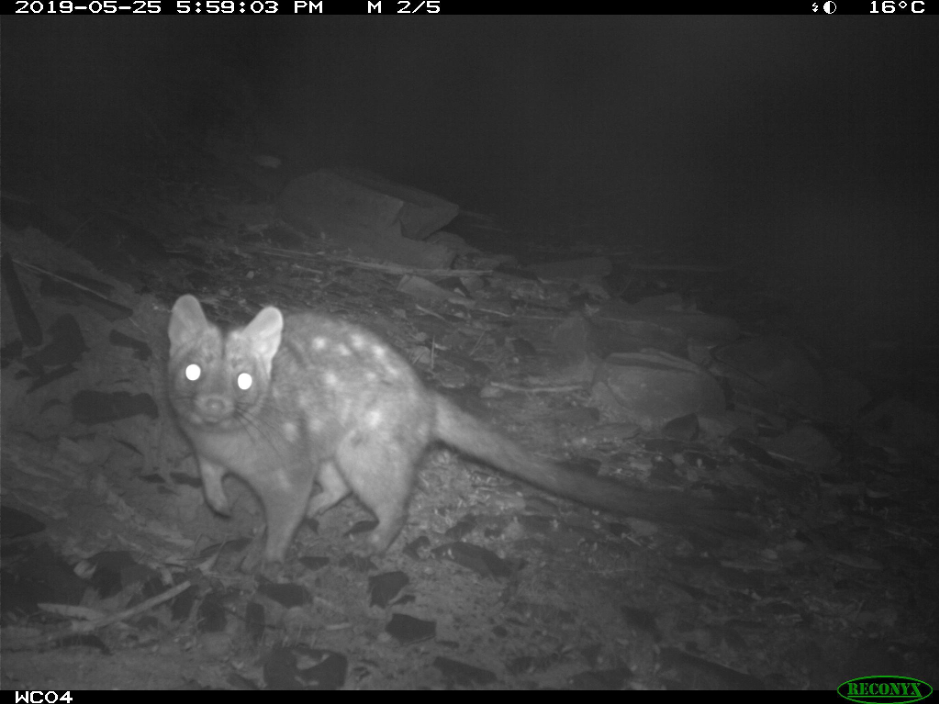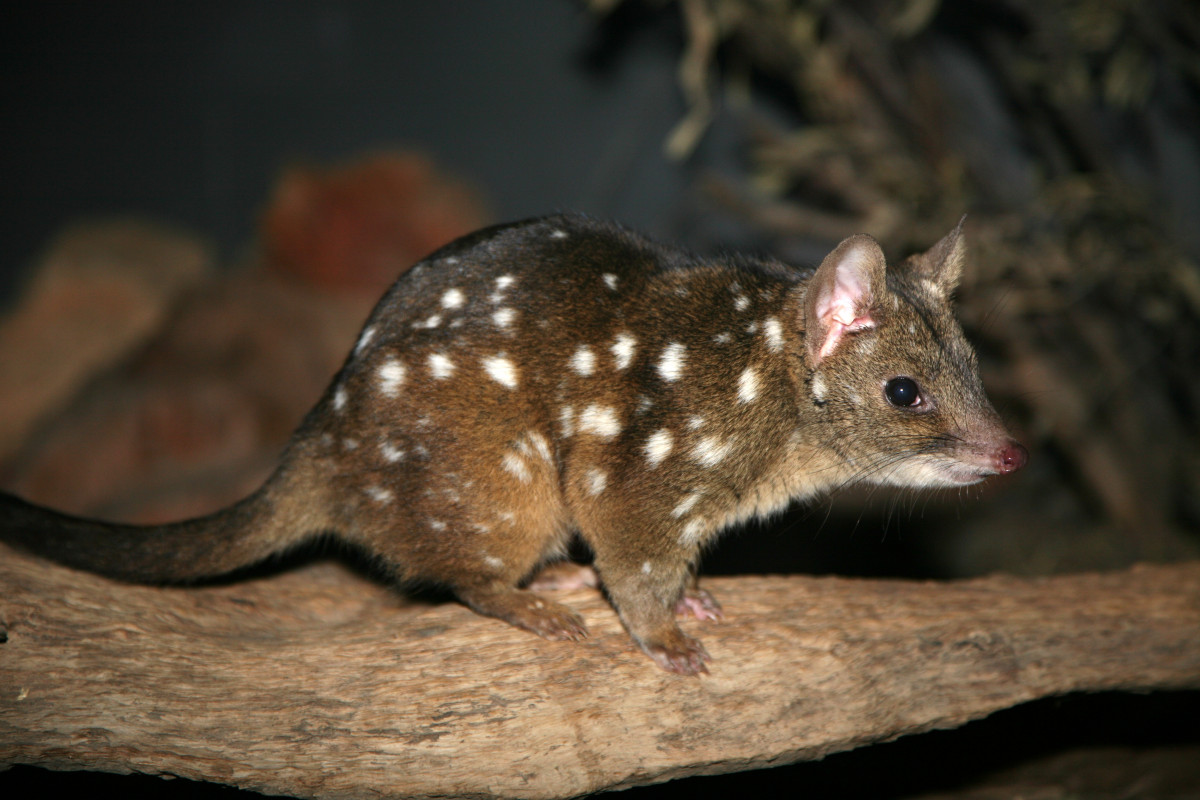
Despite the unrelenting harsh, dry conditions they face daily in the Ikara-Flinders Ranges, the populations of Western Quolls and Brush-tailed Possums are continuing to thrive, having survived three of the driest years on record. Both species were extinct north of Hawker in South Australia before FAME partnered with the SA Department of Environment & Water (DEW) on a bold project to reintroduce the species into the Ikara-Flinders Ranges in 2014.
FAME’s ongoing support of the reintroduction project in the Ikara-Flinders Ranges is now focussed on effective fox and cat control to further help both species as they continue to establish themselves in the region. Managing cat numbers to lower levels has been important in helping these established populations to expand and survive the drought. Cat control was set-up as a trial to test the effectiveness of aerially-dropped poisoned baits that were designed specifically for cats. This has shown to be effective in removing most cats from 650 sq km across the Ikara-Flinders Ranges National Park and Arkaba Station.
With continued fox and feral cat management, the populations of Western Quolls and Brush-tailed Possums will grow and expand their populations. Returning these species to the northern Flinders has only been possible through the ongoing commitment of the Foundation and its partners, particularly the Bounceback Program, the SA Arid Lands Landscapes Board, and the many private conservation and pastoral landholders that collaborate with the program throughout the Flinders, Olary and Gawler Ranges.
Earlier this year – due to COVID – trapping and monitoring, which would ordinarily help to provide a health-check of both the Quoll and Possum populations in the Ranges was unable to be completed. Instead, motion-sensor cameras have been providing a picture story to show how both species have fared this year. Western Quoll activity has been detected in a group of hills only 4 km west of the Oraparinna Station buildings – an area in which they have not previously been found, indicating that a population has established in a wider area. With trapping and monitoring now being rescheduled for the end of 2020, we look forward eagerly to what this will reveal to us.
For more information on the Western Quoll project, visit the project page of the website.
Photo above: A Western Quoll captured on an infra-red motion activated camera used to monitor the Quolls, Brush-tailed Possums and their predators (Department of Environment & Water).
